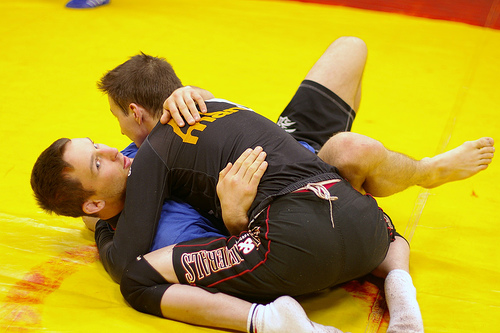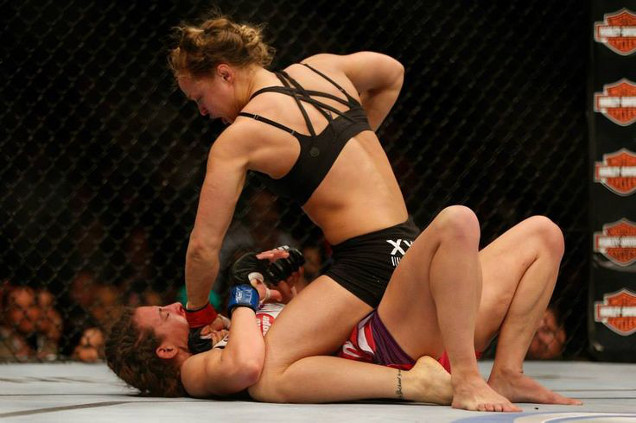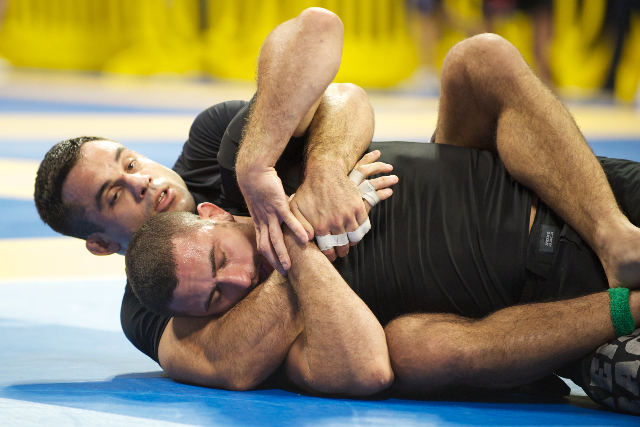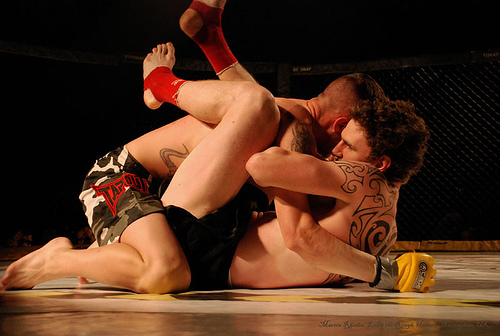One of the most challenging parts of MMA is that you never know what your opponent is going to bring into the cage. Some of the roughest and toughest boxers and strikers have stepped foot into the cage, only to be quickly submitted by a fighter who practices Brazilian jiu-jitsu.
Brazilian jiu-jitsu, also known as BJJ, has grown to become incredibly popular in the MMA world. Without a question, most of this influence is due to the impact of Gracie family. Fighters who work to improve their BJJ skillset will be ready for whatever comes their way on the ground. Here is a look at the MMA foundations of ground work, as demonstrated through Brazilian jiu-jitsu.
The History
It is estimated that jiu-jitsu originally started in Japan around the turn of the 20th century. One of the first people to practice jiu-jitsu was Japanese fighter Mitsuyo Maeda. After deciding to leave Japan, Maeda made his way to Brazil, which is where he met Carlos Gracie.
During their time together, Maeda and Gracie worked to improve upon jiu-jitsu and truly develop the marital art. With the two of them together, they took the basic foundation of the sport and turned it into what we now know was Brazilian jiu-jitsu.
Carlos Gracie was just the first in what would come to be a famous line of fighters that many consider to be the most influential family in MMA. With this fighting style, Gracie proved that it doesn’t matter how big your opponent is. Instead, with a set of grappling and submission moves, even smaller fighters could have an advantage over much larger opponents.
Technique
The name of the game with Brazilian jiu-jitsu is all about grappling. For those who learn BJJ, they will have an arsenal of attacks that they can use to grapple their opponent, with the goal of putting them into a submission or throw position. Once on the ground, a BJJ fighter will then aim to set in a positional lock to try and make an advancement from their current position.
The most common control positions of fighting used in BJJ include:
- Side control
- Full mount
- Back mount
- Full guard
- Half guard
Side Control

Side control refers to a position when the attacking fighter has their torso on top of their opponent, and their hips and legs on either side of their body. Most fighters have a goal from side mount to deliver elbow strikes to the face or knees to the body. They can also attempt to lock up a submission hold, such as an arm bar or a kimura.
Full Mount

Full mount is a great position for the attacking fighter to be in, as it completely limits what the other fighter can do. To get into full mount, an attacking fighter will put all of their bodyweight on their opponent, doing so by putting a leg on both sides of their torso and resting their butt on the other fighter’s midsection. From the full mount, fighters can decide whether to throw down strikes on their opponent, or they can go for a submission instead.
Back Mount

Being on the wrong end of a back mount is incredibly difficult for fighters to get out of. It’s also one of the most dangerous for an attacking fighter who is skilled in BJJ. From the back mount, many fighters will try and box in their opponent’s ears. In doing so, the opponent’s equilibrium will be off and it will make them disoriented. After a fighter has become disoriented, BJJ fighters will then try and sink in a chokehold from the back mount position.
Full Guard And Half Guard

Full guard is a position where either fighter can really look to advance. In fact, some BJJ fighters prefer going to their back in the full guard position, as they will then try and grab for a loose hand and tie up a triangle hold. Because Brazilian jiu-jitsu fighters are so diverse with close combat, it is always a dangerous bet going to the ground with them.
Submissions
Submissions are just as important to a Brazilian jiu-jitsu fighter as mounts and guards. When training Brazilian jiu-jitsu, fighters will learn how to perform armbars, leg locks, toeholds, heel hooks, and a variety of different chokeholds and strangles as well.
The objective with any sort of submission is for a BJJ fighter to inflict enough pain so that their opponent will tap out. In the event that a fighter has their opponent in a submission via a leg or arm, they may try and bend it to a point of hyperextension or dislocation. When attempting a choke or a strangle, BJJ fighters will aim to cut off the flow of circulation to a fighters head, which will then cause them to tap out.
Brazilian jiu-jitsu is a beautiful form of martial arts. But just as much as it is technical and graceful, it’s also an incredibly dangerous tool for MMA fighters who are familiar with the technique.